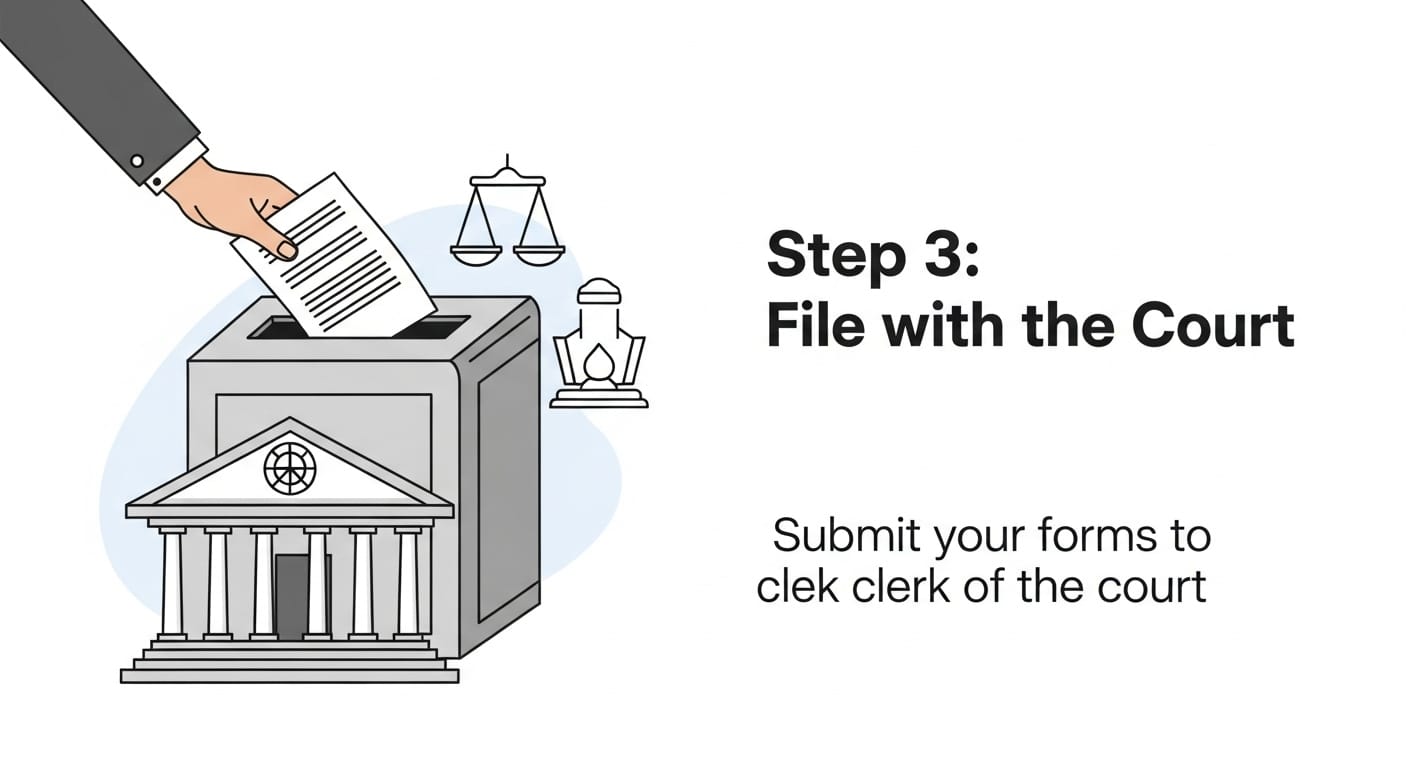Please Note: This post may contain affiliate links. If you click one of them, we may receive a commission at no extra cost to you. As an Amazon Associate, I earn from qualifying purchases.
So, you’ve decided it’s time to settle a dispute, but the idea of hiring a high-priced lawyer seems as appealing as eating a plate of soggy spaghetti. Enter small claims court. It’s like the “DIY” of the legal world, but without the mess of assembling furniture that came with zero instructions.
Whether it’s a landlord refusing to return your security deposit or a contractor who still thinks “finished” means “next Tuesday,” small claims court can help you handle the situation with minimal fuss and expense.
Let’s walk through the process. Trust me, it’s not as scary as it sounds. In fact, it’s kind of like having a chat with your neighbor about a broken fence—just with a bit more paperwork.

Top Takeaways and Key Concepts
Determine Eligibility: Ensure your dispute qualifies for small claims court and is within your state’s monetary limit.
Find the Correct Court: File in the proper jurisdiction to avoid delays or dismissed claims.
Gather Evidence: Collect receipts, contracts, photos, and witness statements to support your case.
File and Serve the Claim: Complete the claim form, pay the filing fee, and notify the defendant properly.
Prepare for and Present at Hearing: Organize evidence, stay factual and civil, and clearly explain your case to the judge.
Summary of This Article
The article provides a clear, step-by-step guide to navigating small claims court for minor disputes like unpaid bills or property damage. It emphasizes verifying eligibility and choosing the correct court, gathering solid evidence, filing and serving the claim, and preparing thoroughly for the hearing. The process is designed to be accessible and informal, allowing individuals to represent themselves effectively. Winning a judgment may require additional enforcement actions if the defendant does not pay, but small claims court offers a cost-effective alternative to traditional lawsuits.
Determine If You Have a Case

Before you start filling out forms like you’re about to sign your life away, you’ve got to figure out if your issue actually qualifies for small claims court. Small claims court is typically reserved for smaller disputes—stuff like unpaid bills, damages to personal property, or breach of contract.
It’s not meant for complex cases like suing someone for breaking your heart, no matter how tempting that may be. (But hey, if someone messes with your puppy, that’s another story).
The first thing you need to figure out is how much money is at stake. The limit varies by state, but generally, you’re looking at claims of a few thousand dollars. If your claim is over that amount, you’ll need to find a bigger courtroom. So, when in doubt, check your local guidelines to see if your situation fits the small claims bill.
Find the Right Court
Now, assuming you’ve got a valid claim, you’ll need to find the court that handles small claims in your area. No, this doesn’t mean marching into your local courthouse and demanding to see the judge like you’re auditioning for a courtroom drama. Instead, check with your county or city government to find the appropriate court.
Interestingly enough, some states have different courts for different types of cases. You’ll want to make sure you’re filing in the right place, because filing in the wrong court is about as useful as putting your pizza delivery order in the mailbox. Fortunately, most jurisdictions make this process relatively simple. You can probably file online or make a quick trip to your local courthouse.
Gather Your Evidence
Alright, now the fun begins—gathering your evidence. Think of this like collecting proof that you actually paid your buddy back for that loan, or that the plumber you hired didn’t fix the sink properly. You’ll need everything you can find—receipts, contracts, pictures, and any other documents that support your claim. The more you have, the better.
And speaking of which, if you’re relying on your best friend’s word that the contractor did indeed botch the job, it’s time to get them to write down their testimony. You want to be ready to show the judge that you’re not just someone complaining about a minor inconvenience but someone who has been wronged.
Fill Out the Claim Form
Once you’ve collected your evidence, it’s time to fill out the actual claim form. Don’t let the paperwork scare you. These forms are relatively simple and are usually available online or at the court. You’ll need to provide basic information, such as the names of the parties involved, the nature of the dispute, and how much money you’re asking for.
To be fair, some of the language can be a little confusing, but don’t worry. If something seems unclear, court clerks are usually willing to help you get through it without making you feel like you’re in the middle of a “Law & Order” episode. Just remember to be honest and straightforward with the facts.
File Your Claim

Once the paperwork is filled out, it’s time to file it with the court. There’s a small filing fee that you’ll need to pay, and again, this varies by state and jurisdiction. Don’t think of it as a fee—think of it as your ticket to the show. After you file, the court will give you a date for your hearing. This is the date when you and the person you’re suing will meet in front of a judge. And yes, you actually get to present your case.
Here’s an interesting tidbit: Small claims court is typically informal, so no need to dust off your lawyer’s suit. You won’t be wearing a tie (unless you want to) or memorizing legal jargon. You’ll be talking about your case in simple terms, making it clear why you should win.
Serve the Defendant
Remember the person you’re suing? Yeah, they need to know about the court date too. You can’t just expect them to show up like it’s a casual brunch invitation. You have to serve them with a notice that you’ve filed a claim against them. This is called “serving the defendant,” and you can do this by sending them the notice through certified mail, hiring a process server, or asking the court to serve them directly.
It’s pretty straightforward, but if you try to skip this step, the case might get thrown out before it even starts. After all, they need to know they’re on the hook for what’s coming.
Prepare for the Hearing
So, the big day has arrived: your small claims court hearing. What should you expect? Well, there’s no need to stress. This isn’t like an episode of “The People’s Court” where the judge has a bad attitude and the audience is waiting for drama. Instead, you and the defendant will each get a chance to explain your side of the story.
This is where your evidence and any witnesses you have lined up come into play. Just present the facts clearly—don’t try to make it into a soap opera. The judge is there to make a fair decision, not to listen to a dramatic re-enactment of your entire life. Keep it simple, keep it focused, and most importantly, keep it civil.
After the Hearing: The Judge’s Decision
Once the hearing is over, the judge will usually make a decision either on the spot or shortly afterward. If you win, congratulations! You’ll get a judgment, which is essentially a legal ruling that the defendant owes you money. But here’s the catch—just because you’ve won doesn’t mean they’ll hand over the check immediately.
If the defendant doesn’t pay up, you can take further steps to enforce the judgment, such as garnishing their wages or putting a lien on their property. But again, that’s a whole other process we can dive into later. For now, just be proud that you took action and got through the process.
Resources
How to File a Claim in Small Claims Court
https://www.nolo.com/legal-encyclopedia/how-to-file-small-claims-court-29576.html
Small Claims Court Guide
https://www.legalzoom.com/articles/small-claims-court-guide
Understanding Small Claims Court
https://www.lawhelp.org/us/resource/understanding-small-claims-court
Frequently Asked Questions
What types of cases can be filed in small claims court?
Small claims court handles minor disputes such as unpaid debts, property damage, or breach of contract, typically involving amounts within your state’s monetary limit.
How do I know if my claim qualifies for small claims court?
Check your state’s monetary limit and ensure the dispute is straightforward. Complex or high-value cases usually require filing in a higher court.
Where should I file my small claims case?
File in the correct court within the jurisdiction where the defendant lives or where the dispute occurred to avoid delays or case dismissal.
What evidence should I bring to small claims court?
Bring receipts, contracts, photos, written communications, and witness statements to support your claim and clearly demonstrate the facts of your case.
What is the process for filing and serving a claim?
Complete a claim form, pay the filing fee, and properly serve the defendant with notice through certified mail, a process server, or court assistance.
Do I need a lawyer in small claims court?
No, small claims court is designed for individuals to represent themselves. The process is informal, focusing on facts rather than complex legal procedures.
What happens if I win my case and the defendant doesn’t pay?
If the defendant fails to pay after judgment, you may enforce the ruling through wage garnishment, property liens, or other collection methods authorized by the court.

Kevin Collier is a legal expert passionate about simplifying complex legal concepts for everyday individuals. With a focus on providing clear, practical information, he covers a wide range of topics, including rights, responsibilities, and legal procedures. Kevin aims to empower readers with the knowledge they need to navigate the legal landscape confidently, ensuring they can make informed decisions regarding their legal matters. Through insightful articles and easy-to-understand resources, he helps demystify the law, making it accessible to all.










